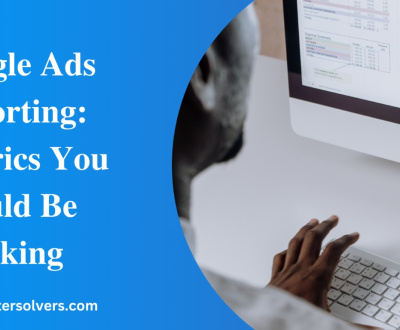A/B Testing Your Google Ads for Maximum Performance: Boost Your ROI Today!

Introduction:
Are you tired of wasting money on Google Ads that don’t deliver the results you want? Do you want to optimize your ad campaigns and increase your return on investment (ROI)? Then you need to learn how to A/B test your Google Ads for maximum performance.
A/B testing, also known as split testing, is a powerful tool that allows you to compare two or more versions of your ad to see which one performs better. By testing different variables such as headlines, images, copy, and calls to action, you can identify the elements that resonate with your target audience and improve your ad’s overall performance.
In this article, we’ll show you how to A/B test your Google Ads for maximum performance, step by step. We’ll cover everything from setting up your tests to analyzing your results, so you can optimize your ad campaigns and boost your ROI. Let’s get started!
How to A/B Test Your Google Ads for Maximum Performance:
-
Define Your Goals and Metrics
Before you start A/B testing your Google Ads, you need to define your goals and metrics. What do you want to achieve with your ad campaigns? Do you want to increase your click-through rates (CTR), conversions, or revenue?
Once you’ve identified your goals, you need to choose the metrics that will help you measure your success. For example, if your goal is to increase your CTR, you’ll want to track your ad’s impressions, clicks, and CTR. If your goal is to increase your conversions, you’ll want to track your ad’s clicks, conversions, and conversion rate.
-
Create Your Ads
Next, you need to create two or more versions of your ad that differ in one or more variables. For example, you might test two different headlines, two different images, or two different calls to action.
Make sure that each version of your ad is identical except for the variable you’re testing. This will ensure that any differences in performance are due to the variable you’re testing and not other factors.
-
Set Up Your Tests
Once you’ve created your ads, you need to set up your tests in Google Ads. To do this, follow these steps:
- Go to your Google Ads dashboard and select the campaign you want to test.
- Click on the Ad Variations tab and select the ad you want to test.
- Click on the “Create New Variant” button and create a new version of your ad with the variable you want to test.
- Set the traffic split for your test. This will determine how much traffic each version of your ad receives. We recommend starting with a 50/50 split, so each version receives an equal amount of traffic.
- Start your test and let it run for at least two weeks. This will give you enough data to make an informed decision about which version of your ad performs better.
-
Analyze Your Results
Once your test has run for at least two weeks, it’s time to analyze your results. To do this, go to the Ad Variations tab in Google Ads and look at the performance data for each version of your ad.
Pay attention to the metrics that you chose in step 1. Which version of your ad performed better in terms of your goals and metrics? Did one version have a higher CTR, more conversions, or a higher conversion rate?
Based on your analysis, choose the winning version of your ad and make it the default version for your campaign. You can then create a new test with a new variable to test and continue to optimize your ad’s performance.
-
Test Continuously
A/B testing is not a one-time event; it’s an ongoing process that you should do continuously to improve your ad’s performance. You should test different variables, such as headlines, images, copy, and calls to action, to find the winning combination that resonates with your target audience.
Don’t be afraid to try new things and take risks. The more you test, the more data you’ll have, and the more informed decisions you’ll be able to make.
FAQs:
Q. How many variables should I test at once?
A. We recommend testing only one variable at a time to isolate its impact on your ad’s performance. If you test multiple variables simultaneously, it can be difficult to determine which variable is responsible for any changes in performance.
Q. How long should I run my tests?
A. We recommend running your tests for at least two weeks to gather enough data to make an informed decision. However, the length of your test may depend on your goals, budget, and the amount of traffic your ad receives.
Q. Can A/B testing improve my Quality Score?
A. Yes, A/B testing can improve your Quality Score by increasing your ad’s relevance and click-through rates. A higher Quality Score can lead to lower costs per click and higher ad rankings.
Conclusion:
A/B testing your Google Ads is a powerful tool that can help you optimize your ad campaigns and increase your ROI. By testing different variables and analyzing your results, you can identify the elements that resonate with your target audience and improve your ad’s overall performance.
Remember to define your goals and metrics, create identical ads with different variables, set up your tests, analyze your results, and test continuously to find the winning combination. With these steps, you can maximize your ad’s performance and achieve your marketing goals. Start A/B testing your Google Ads today and watch your ROI soar!
The author is the owner and admin of the blog MasterSolvers.com. He is an Engineer by Profession, Designer, Developer, and Internet Marketer by Choice. He loves to read and write about SEO and Latest Tips and Tricks for Digital Marketing.
About us and this blog
We are a digital marketing company with a focus on helping our customers achieve great results across several key areas.
Request a free quote
We offer professional SEO services that help websites increase their organic search score drastically in order to compete for the highest rankings even when it comes to highly competitive keywords.










